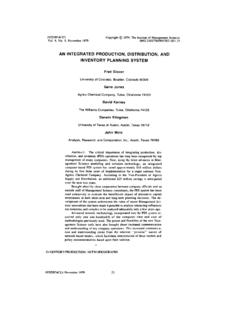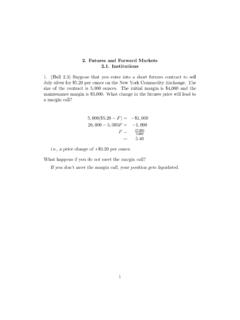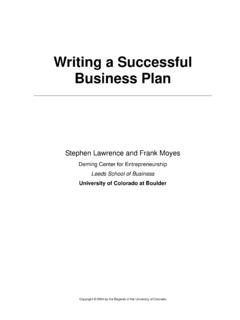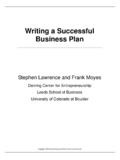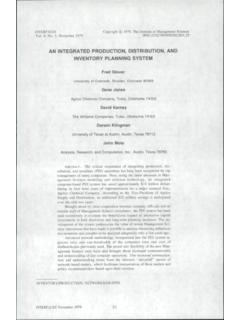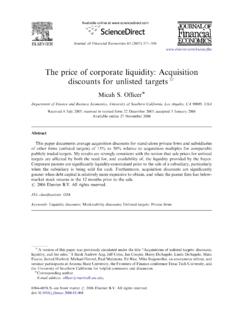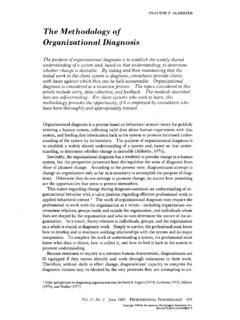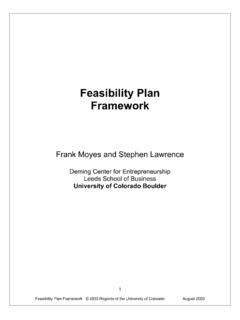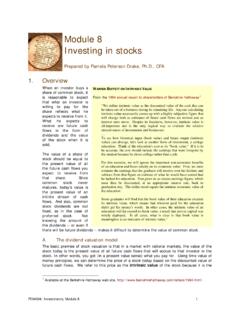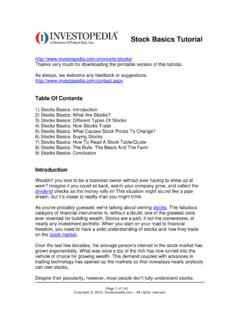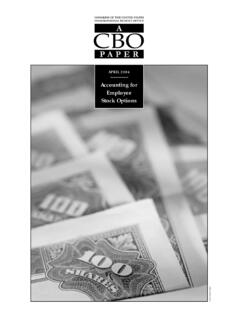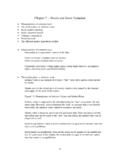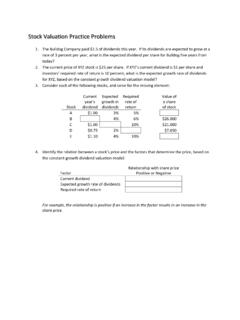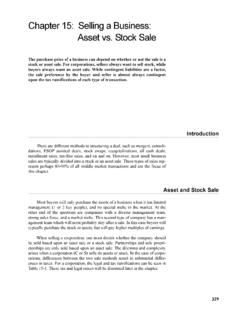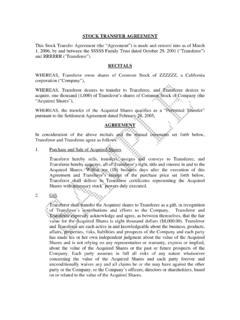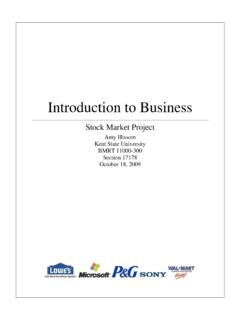Transcription of The Stock Market and Investment - Leeds School of Business
1 The Stock Market andInvestmentRobert J. BarroHarvard UniversityChanges in Stock prices have substantial explan-atory power for Investment , especially for long-term samples, and even in the presence of cashflow variables. The Stock Market dramatically out-performs a standard q-variable because the mar-ket-equity component of this variable is only arough proxy for Stock Market value. Although thestock Market did not predict accurately after thecrash of October 1987, the errors were not statis-tically significant.
2 Parallel relationships for Can-ada raise the puzzle that Canadian investmentappears to react more to the Stock Market thanto the Canadian literature initiated by Tobin (1969) relates invest-ment to q, which is the ratio of the Market s valuationof capital to the cost of acquiring new capital. Anincrease in the prospective return on capital or adecrease in the Market s discount rate raises q andthereby increases Investment . With a simple form ofadjustment cost for changing the capital Stock , theoptimal amount of current Investment depends onlyon the current value of q.
3 But more generally-forexample, with a time-to-build technology for the cap-ital Stock -current Investment depends on currentand lagged values of q [see Hayashi (1982) and Abeland Blanchard (1986)].This article was prepared for presentation at the National Bureau of EconomicResearch conference on Stock Market Volatility, Puerto Rico, March research was sponsored by the National Science Foundation. The authoris grateful for comments from Fischer Black, Changyong Rhee, Bill Schwert,and Larry Summers and for research assistance from Xavier Sala i reprint requests to Dr.
4 Barre, Department of Economics, HarvardUniversity, Littauer 120, Cambridge, MA growth rate of Investment relates to current and lagged valuesof proportionate changes in q. An important source of variation inthe numerator of q the Market value of capital-is the change instock Market prices, Therefore, q theory can rationalize a positiverelation between Investment and current and lagged changes in stockmarket prices, as estimated by Fama (1981) and Barro (1989), is well known [see, , Hayashi (1982)], the distinction betweenaverage and marginal q can cause difficulty in empirical implemen-tations of the theory.
5 For example, changes in relative prices-suchas those for energy relative to other goods-may move the stockmarket in one direction and the incentive to invest in the other direc-tion. That is, marginal q (associated with Investment in the new cap-ital, which is suited to the current configuration of relative prices)may rise, while average q (associated with the existing capital) changes, especially when they treat old and new capital differ-ently, can have similar effects.
6 If the data refer to average q, as istypically the case, the theory will perform well only if the dominantdisturbances relate to changes in the prospective returns on all formsof capital or to shifts in Market discount established empirical view [derived from results of von Fur-stenberg (1977), Clark (1979), and Summers (1981), among others]is that measures of the Market value of capital (q-type variables) haveonly limited explanatory power for Investment . Furthermore, whenmeasures of corporate profits or production or similar variables areconsidered, the statistical significance of the Market -valuation vari-ables tends to disappear.
7 Of course, corporate profits and productionare simultaneously determined with Investment , and this simultaneitycan account for the explanatory value of these variables. But the viewin the empirical literature is that even predetermined values of vari-ables like profits or production leave Market -valuation measures withlittle predictive power for Investment . This conclusion appears toconflict with the strong relations between Investment [and othermacroeconomic variables, such as gross national product (GNP)] andstock Market returns, as reported in Fama (1981) and Barro (1989).
8 The explanation is that the Stock Market does better than the measuresof q that have been used in previous empirical studies of Results for Investment and GNPT able 1 shows regressions with annual data for DIt, the growthrate of real fixed, nonresidential, private domestic Investment . I donot consider broader definitions of Investment , which would includeexpenditures on residential housing and other consumer durables,116and perhaps outlays on human capital, since these flows do not relatedirectly to Stock Market prices or other variables that measure themarket value of Business capital.
9 Results for the corporate componentof Investment , which relates naturally to the Stock Market and tocorporate profits, are similar to those for my broader concept of busi-ness Investment variable consists of expenditures on capital goodsand is therefore gross of depreciation. In some models (in whichadjustment costs pertain to gross expenditures rather than to netinvestment), it is gross Investment that relates naturally to q- typevariables. However, in other settings (in which replacement expen-ditures do not entail any adjustment cost), it is net Investment thatwould be associated with q.
10 In any event, since available measuresof depreciation are largely arbitrary, the choice of gross investmenttends to be dictated on grounds of data sample periods considered in Table 1, which exclude datesaround World Wars I and II, are 1891-1914, 1921-1940, 1948-1987;1921-1940, 1948-1987; and 1948-1987. The variables considered areDIt: Growth rate of Investment (year t relative to year t - 1). Stock t: Growth rate for year t of the real Stock Market price. For1926-1985, I used the value-weighted return on stocks , exclusive ofdividends,1 from the Center for Research in Securities Prices (CRSP)of the University of Chicago.
